Speaker
Description
In sodium borate glasses, boron atoms can be found in triangles (BO3) or in tetrahedral (BO4) units, which population can be easily quantified with the help of NMR spectroscopy.[1] These two speciations of boron generates the boron’s anomaly, which is a non-linear evolution of properties upon the addition of sodium oxide.[2] In addition, a large fraction of boron are involved in superstructural units like boroxol or pentaborate rings.
However, those units remain difficult to identify in experimental NMR spectra and more sophisticated 2D techniques (such as MQMAS) are generally required. Howerver, modern NMR computational tools make it now possible to model NMR spectra from MD simulations and thus can significantly improve the interpretation of experimental data.[3]
In this work, we investigate theoretically and experimentally the structure of sodium borate glasses using 11B and 23Na NMR combined with molecular dynamics (MD) simulations and neutron diffraction. Comparison of classical MD (CMD) with ab-initio MD (aiMD) shows that only aiMD produces structural models with a non-negligible fraction of super-structural
units but still below the one determined by two-dimensional 11B MQMAS NMR
spectroscopy.
In order to improve our structural models, in particular to include a larger fraction of superstructural units, we develop a hybrid reverse monte carlo (HRMC) scheme for accounting for NMR and neutron data, including a MD force-fields and implementing a simulated annealing approach for accelerating the search of new optimized structures. The
fraction and the form of superstructural units is an adjustable parameter and we observe that neutron data are not sufficiently sensitive to discriminate the various structural models generated, in contrast to 11B NMR for both BO3 and BO4 units (i.e., ring and non-rings species). Simulated 11 B and 23 Na 2D MQMAS NMR are found to be in good agreement
with experiments but the DFT-GIPAW NMR calculations computational cost limits the size of systems that can be studied (from 500 to 1000 atoms). In order to overcome this limitation, we employ a recently developed a Machine Learning (ML)[4] approach for computing NMR shifts and it first applications to borate glasses will be presented.
[1] C. Lee, S. K. Lee, J. Non-Cryst. Solids, 555, 120271 (2021)
[2] K. Vignarooban, P. Boolchand, M. Micoulaut, M. Malki, et W. J. Bresser, EPL Europhys. Lett. 108, 56001 (2014).
[3] T. Charpentier, M.C. Menziani, A. Pedone, RSC Adv. 3, 10550-10578 (2013)
[4] Z. Chaker, M. Salanne, J-M. Delaye, T. Charpentier, Phys. Chem. Chem. Phys. 21, (2019) 21709

